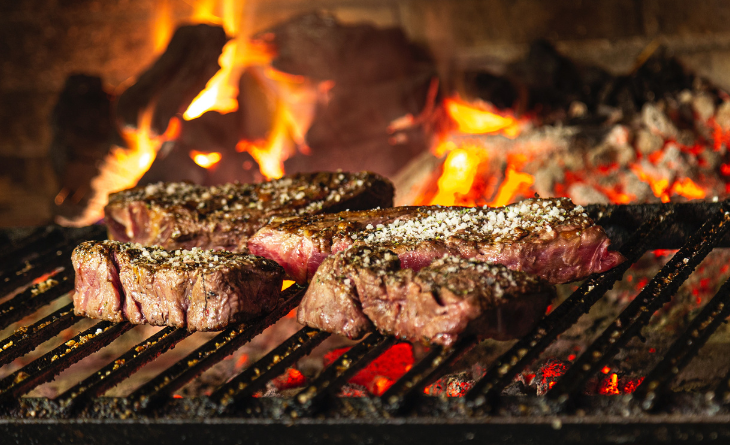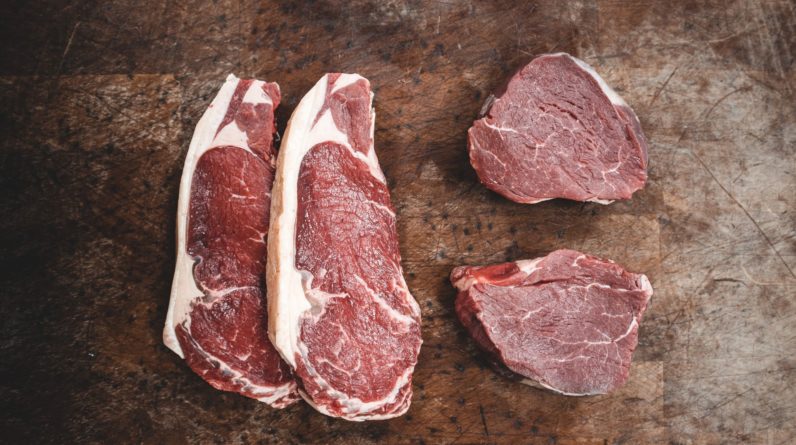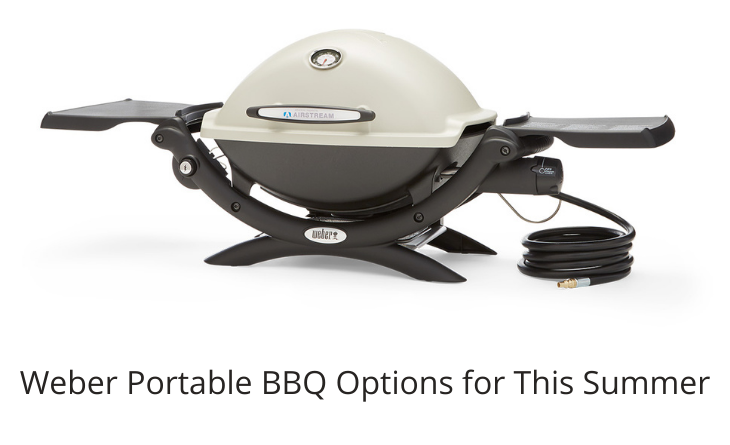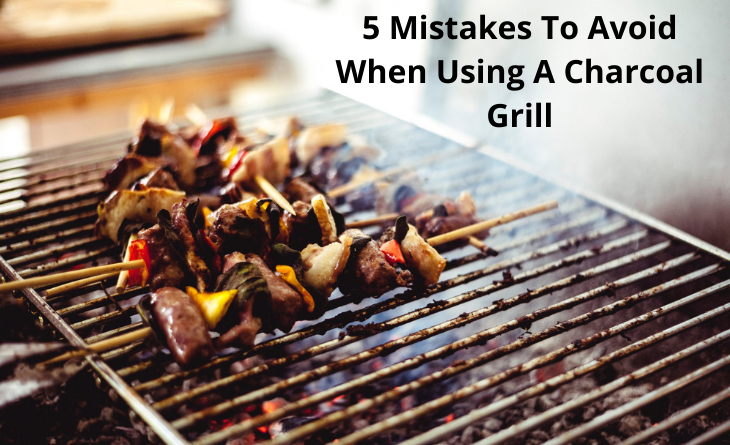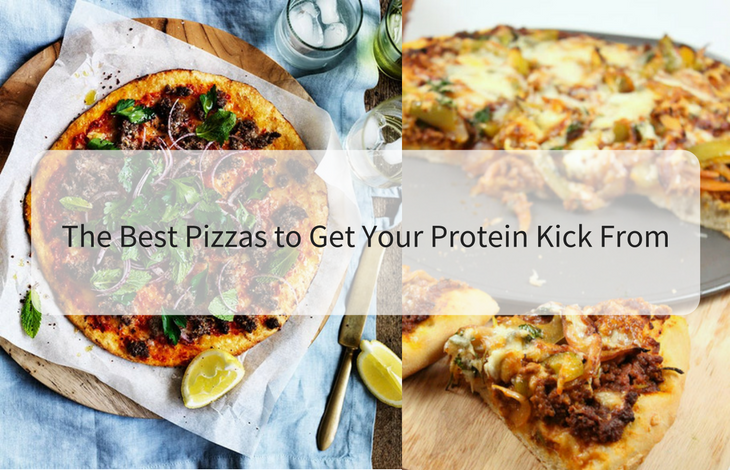
When you think about healthy eating, pizza is the last thing that comes to mind. Still, a lot has changed in the world of diet and exercise, and right now, there’s a big focus on cheat days and protein. Health aficionados are less interested in reducing carbs and forking salads. The leanings are more towards consuming more protein, which works out great for pizza lovers everywhere.
Pizza, in general ,is a high-calorie food. In addition to the carbs in the dough, there’s also high sugar and fat content in the sauces. However, pizza can be a good source of protein, depending on your choice of toppings. While the world seems irredeemably divided on the use of pineapple, there are many other ingredients we can agree on, and they have the added benefit of high protein content.
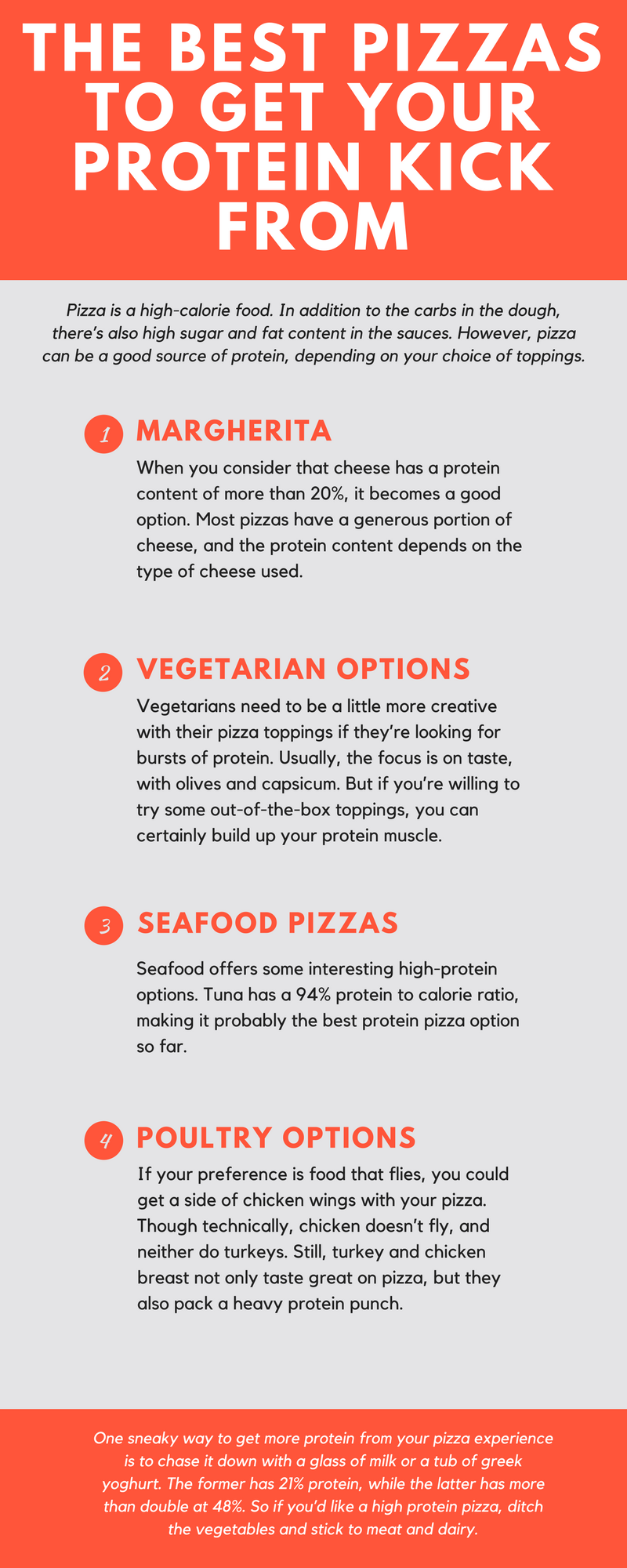
Margherita doesn’t seem like a particularly body-building pizza, since it’s a basic cheese and tomato combination. But when you consider that cheese has a protein content of more than 20%, it becomes a good option. Most pizzas have a generous portion of cheese, and the protein content depends on the type of cheese used.
Cottage cheese has the highest protein content, with about 59% based on caloric volume. Cheddar has 26%, mozzarella has 29%, swiss cheese has 30%, and parmesan has 38%. While all these cheeses have a high-calorie count, they have a large amount of protein to balance their sugars.
Vegetarians need to be a little more creative with their pizza toppings if they’re looking for bursts of protein. Usually, the focus is on taste, with olives and capsicum. But if you’re willing to try some out-of-the-box toppings, you can certainly build up your protein muscle.
First, let’s look at the most traditional vegetarian option of all – mushroom. It’s often stated that mushrooms carry as much protein as lean beef, but a quick Google search suggests 100 grams of beef contains 26 grams of protein, while 100 grams of mushrooms only contain 3 grams. Time for Plan B, where B is for Broccoli and Brussel Sprouts.
If you base your protein comparison on weight, then Brussel Sprouts don’t seem much better than mushrooms. 78 grams of sprouts only contain 2 grams of protein. However, they contain 28 calories, which means for every calorie consumed, you get 17% protein, which is not a bad deal.
On this basis, your 100 grams of mushrooms for 3 grams of protein contains 22 calories, which actually brings it closer to Brussel sprouts. Broccoli beats both, at 20% protein per calorie. Other vegetarian options include quinoa at 15%, lentils at 27%, pumpkin seeds at 14%, peanuts at 16%, almonds at 13%, and oats at 15%, though those sound like rather iffy pizza toppings.
Back to the regular world of meaty pizza, seafood offers some interesting high-protein options. Tuna has a 94% protein to calorie ratio, making it probably the best protein pizza option so far. Shrimp comes a close second, with 90%. You could also go for smoked salmon, which has 46%, though you’d have to be careful not to overcook it.
If your preference is food that flies, you could get a side of chicken wings with your pizza. Though technically, chicken doesn’t fly, and neither do turkeys. Still, turkey and chicken breast not only taste great on pizza, but they also pack a heavy protein punch. Chicken breast has 80% protein per calorie, while turkey breast has 70%. For lovers of beef, a lean cut offers 53% protein per calorie, so you’re still better off with poultry and fish.
One sneaky way to get more protein from your pizza experience is to chase it down with a glass of milk or a tub of greek yoghurt. The former has 21% protein, while the latter has more than double at 48%. So if you’d like a high protein pizza, ditch the vegetables and stick to meat and dairy.
Read Also:
